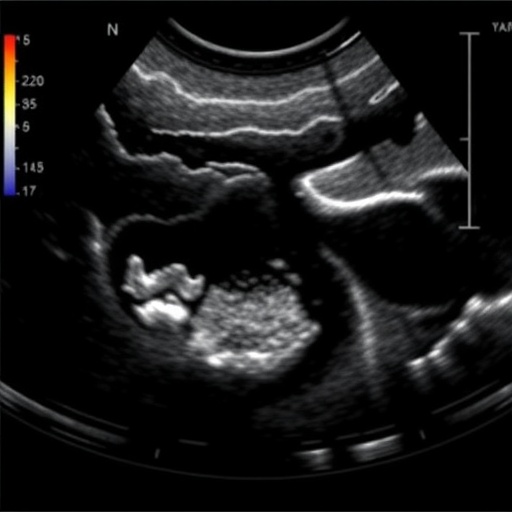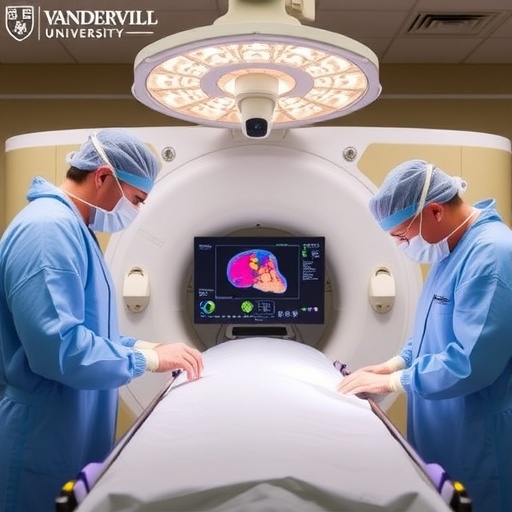In a groundbreaking advancement for the treatment of chronic lymphocytic leukemia (CLL), researchers have unveiled promising results from a phase Ib clinical trial assessing the addition of the investigational antibody ianalumab (VAY736) to the established Bruton’s tyrosine kinase inhibitor (BTKi) ibrutinib (Imbruvica). This innovative combination therapy offers potential not only to deepen therapeutic responses but also to allow patients the unprecedented opportunity to discontinue their daily medication, fundamentally changing the landscape of chronic cancer management.
Chronic lymphocytic leukemia is the most common form of adult leukemia in the Western Hemisphere, affecting around 200,000 individuals in the United States alone. Standard treatment has been revolutionized through the introduction of BTKi drugs such as ibrutinib, which have transformed patient outcomes significantly by targeting B-cell receptor signaling pathways critical to the survival of malignant B cells. Despite their efficacy, these treatments necessitate lifelong administration, exposing patients to cumulative toxicities and psychological burdens associated with chronic daily therapy.
The investigational monoclonal antibody ianalumab distinctly targets the B-cell activating factor receptor (BAFR), a surface protein crucial for B-cell survival and maturation. By binding to BAFR, ianalumab not only interrupts pro-survival signals but also tags these malignant cells for destruction by the body’s natural killer (NK) immune cells. Preliminary preclinical studies conducted in the laboratory of Dr. John C. Byrd at the University of Pittsburgh substantiated the synergy between ianalumab and BTKi therapy, demonstrating enhanced antitumor activity and suggesting the possibility of deeper remissions.
The phase Ib trial, conducted across multiple centers, enrolled thirty-nine patients who either failed to achieve complete remission with ibrutinib alone or had developed resistance-conferring mutations. Participants received intravenous doses of ianalumab biweekly alongside continuous standard ibrutinib therapy for up to eight cycles. This open-label trial primarily assessed safety and tolerability but also rigorously evaluated antitumor activity with an emphasis on measurable residual disease (MRD) levels, a critical biomarker indicating the presence of residual cancer cells below standard detection thresholds.
Encouragingly, the combination demonstrated a favorable safety profile, with no dose-limiting toxicities reported. While 41% of patients experienced grade 3 or higher adverse effects, these were primarily hematologic, notably neutropenia, which was manageable. The overall response rate neared 60%, underscoring a substantial proportion of patients achieving tumor burden reduction. Importantly, 43.6% attained undetectable MRD (uMRD) in peripheral blood or bone marrow, a key indicator of deep remission that correlates with prolonged progression-free survival.
One of the most exciting outcomes of this study involved patient treatment discontinuation. Seventeen participants were able to halt ibrutinib therapy and remained off treatment for periods ranging between twelve and twenty-four months. This cessation not only breaks the precedent of lifelong therapy but also alleviates the psychological weight of daily medication reminders of illness. Analyses revealed that ianalumab boosted NK and T-cell activation, confirming the antibody’s mechanism of enhancing immune-mediated clearance of leukemic cells and providing a robust complement to the kinase inhibition of ibrutinib.
Further refinement in response depth was observed with thirteen patients achieving uMRD status in both blood and bone marrow compartments, reflecting profound systemic eradication of leukemia. Four additional patients attained uMRD solely in bone marrow, indicative of the capacity for the antibody to target sanctuary sites often refractory to therapy. These observations collectively demonstrate that combination immunotherapy and targeted kinase inhibition can induce remissions deep enough to consider treatment-free intervals without sacrificing disease control.
From a patient-centric perspective, discontinuing daily oral BTKi regimens transcends clinical benefits. Dr. Byrd poignantly highlights that the ability to stop therapy eliminates the ever-present psychological reminder of cancer, fostering improved quality of life and emotional well-being. The reduction of continuous drug exposure also diminishes the cumulative toxicity profile, particularly concerning immune suppression and infection risk historically associated with BTKi monotherapy.
Notably, infection rates in this trial were lower than those typically reported with single-agent ibrutinib treatment, alleviating concerns that the addition of ianalumab would increase immunosuppression or vulnerability to infectious complications. This observation supports the safety of fixed-duration combination regimens aiming to achieve durable remissions without escalating infectious risk, an essential consideration in managing an immunocompromised patient population.
Despite its promise, the study’s limitations include the relatively small sample size and absence of extended long-term follow-up. These factors underscore the necessity for larger randomized trials to validate the durability of remissions, confirm the safety profile, and establish whether this combination can achieve regulatory approval as a new standard of care for CLL patients. Such trials must also investigate whether these fixed-duration therapies can significantly reduce the overall cost of treatment and improve patient adherence and satisfaction.
The quest to transform CLL treatment from an indefinite, lifelong commitment into a finite, potentially curative regimen may be within reach through the strategic coupling of ianalumab and ibrutinib. Harnessing the immune system’s cytotoxic potential alongside targeted kinase inhibition represents a powerful therapeutic paradigm. Should further studies replicate these findings, patients with CLL may soon benefit from less burdensome, more effective options that allow them to reclaim normalcy beyond their cancer diagnoses.
Funding for this pivotal study was provided by Novartis Pharmaceuticals Corporation, with key contributions from investigators including Dr. John C. Byrd, director of the UPMC Hillman Cancer Center and associate vice chancellor for cancer affairs at the University of Pittsburgh School of Medicine, and Dr. Kerry A. Rogers from The Ohio State University. Their combined expertise and collaboration have propelled this important clinical advance, reflecting the critical role of academic-industry partnerships in accelerating novel cancer therapies from bench to bedside.
In conclusion, the addition of ianalumab to ibrutinib delineates a pioneering strategy in CLL treatment, one which not only shows enhanced efficacy but also redefines patient experience by potentially ending the necessity for continuous therapy. Continued investigation and larger-scale validation will determine if this combination heralds a new era in leukemia care, shifting paradigms to fixed-duration, immune-augmented regimens that improve survival and patient quality of life alike.
Subject of Research:
The investigation of ianalumab combined with ibrutinib as a therapeutic strategy in chronic lymphocytic leukemia to achieve deeper remission and enable treatment discontinuation.
Article Title:
Investigating the addition of ianalumab (VAY736) to ibrutinib in patients with chronic lymphocytic leukemia (CLL) on ibrutinib therapy: results from a phase Ib study
News Publication Date:
6-Nov-2025
Web References:
https://aacrjournals.org/clincancerres
https://clinicaltrials.gov/study/NCT03400176?term=NCT03400176&rank=1
http://dx.doi.org/10.1158/1078-0432.CCR-25-0210
References:
John C. Byrd et al., “Investigating the addition of ianalumab (VAY736) to ibrutinib in patients with chronic lymphocytic leukemia (CLL) on ibrutinib therapy: results from a phase Ib study,” Clinical Cancer Research, November 2025.
Image Credits:
Not provided
Keywords:
Chronic lymphocytic leukemia, CLL, ibrutinib, BTK inhibitors, ianalumab, VAY736, B-cell activating factor receptor, BAFFR, measurable residual disease, MRD, combination therapy, immunotherapy, phase Ib clinical trial, NK cells, antibody therapy
Tags: B-cell activating factor receptor targetingB-cell receptor signaling pathwayBTK inhibitor therapychronic cancer medication discontinuationchronic lymphocytic leukemia treatmentcombination therapy for CLLianalumab VAY736 clinical trialinnovative cancer management strategiesmonoclonal antibody for leukemiapatient outcomes in CLLreducing lifelong ibrutinib usetherapeutic responses in leukemia






